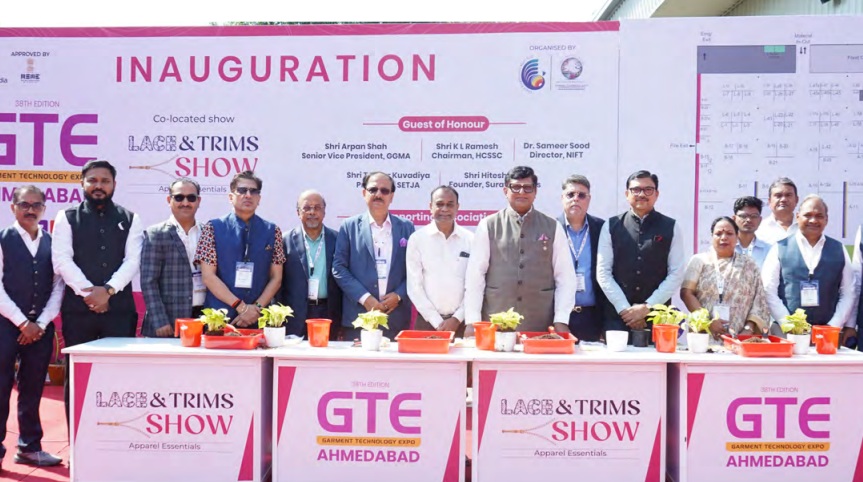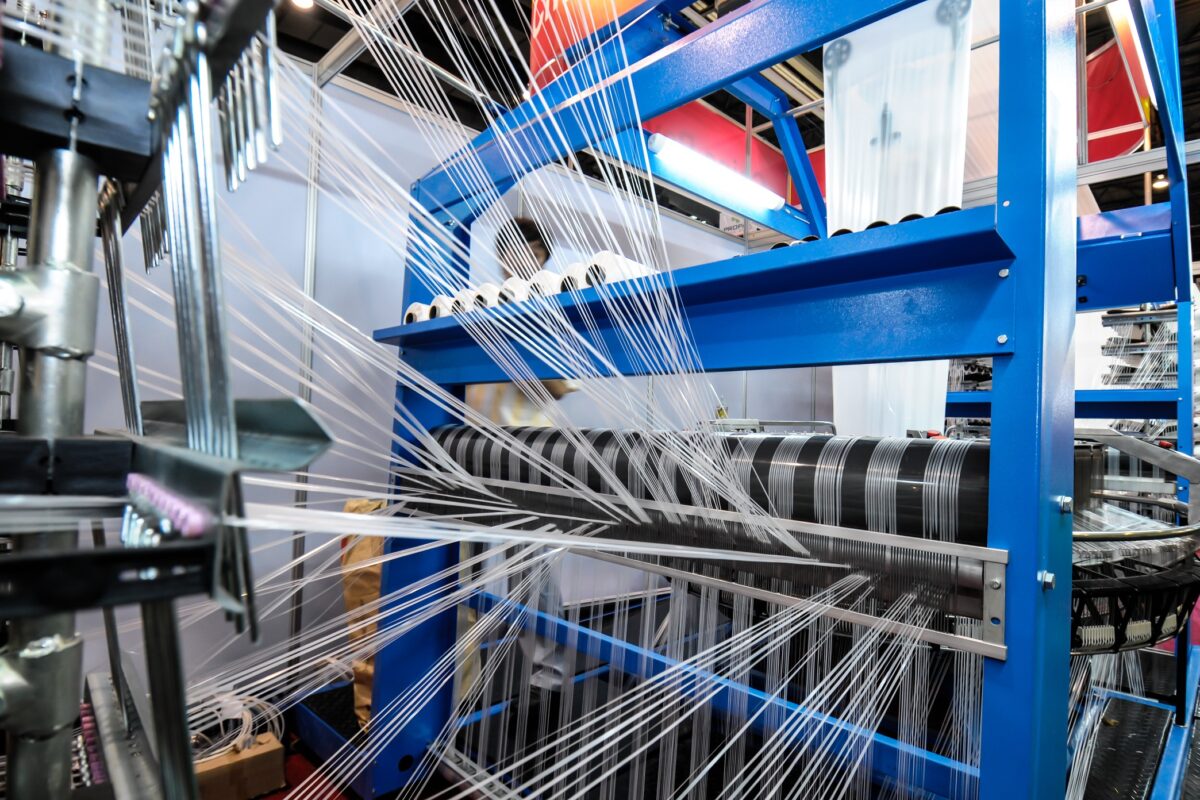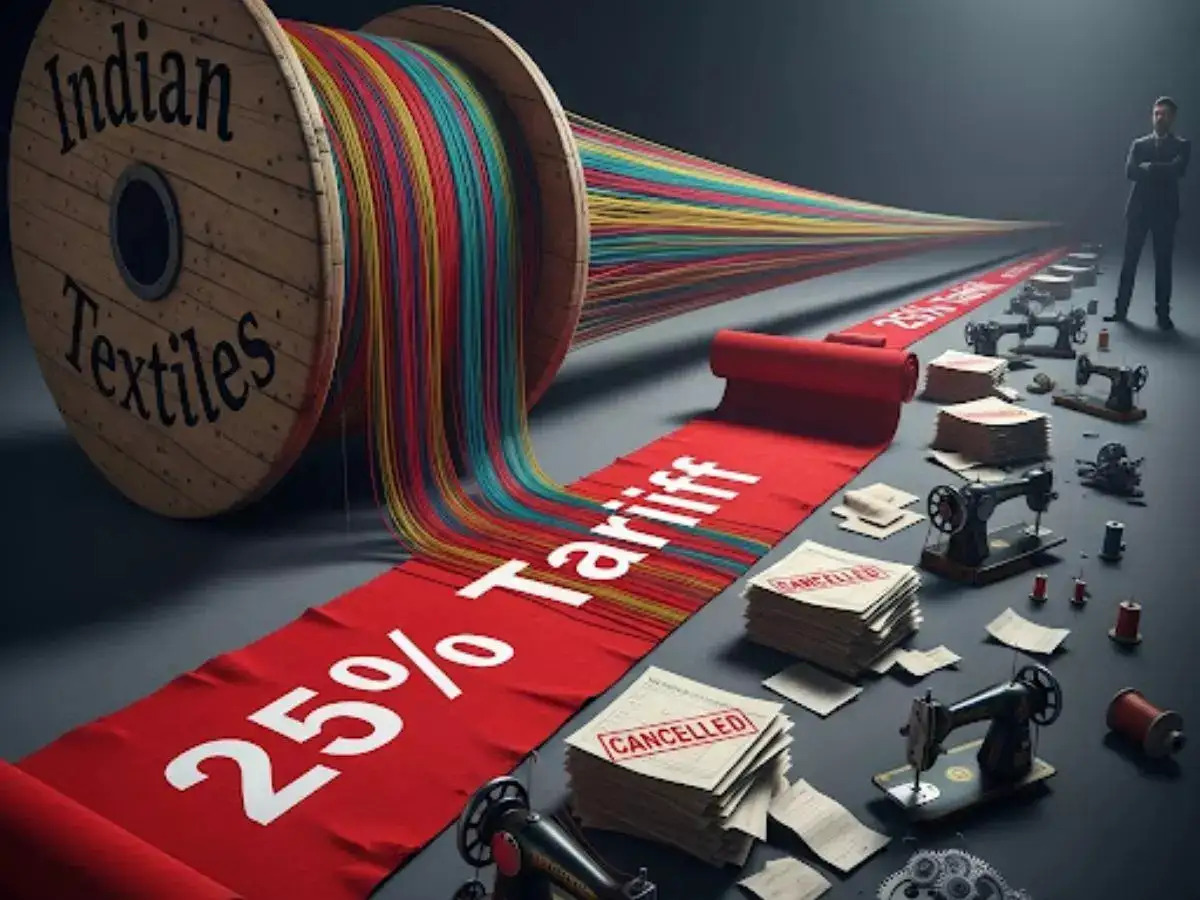FW
Covestro has been cooperating with IAF last year with a series of workshops in which it featured as an excellent example of the value of innovation in raw materials for the apparel industry. Central in its presentation was the new waterborne method for PU coatings used mainly in artificial leather that it had developed. In this method, the PU-coated fabrics are processed entirely without solvents, which remove hazardous substances from the material manufacturing, eliminates environmental pollution risks, and greatly reduces the amount of water and energy needed.
One of the world’s leading polymer materials suppliers, from September 1, 2015, Bayer MaterialScience started operating under the Covestro name. The company is now legally and economically independent from Bayer AG and has a new logo and vision.
The workshops organized by IAF and Covestro not only involved showing what the technology could do, but also addressed the model used by Covestro to overcome current supply chain constraints to the implementation of new technologies. Covestro has launched a technology and services model under the brand name INSQIN in 2014. It combines the technology itself with a high level of co-creation of new materials together with customers and downstream players.
iafnet.eu
"Intertextile Shanghai concluded its 2017 Autumn Edition on October 13 with strong business results and praise from worldwide participants once again. Once again they affirmed its reputation as the most effective apparel fabrics and accessories trade event for boosting sales and product sourcing. Knowing the fair covered an all-encompassing range of products that cater to all sourcing needs, 77,883 came from 102 countries and regions to Shanghai to source."


Meanwhile, 4,538 exhibitors from 32 countries and regions enjoyed the surge of business potential brought by this large number of high-quality trade buyers. The strong line-up of exhibitors, included 10 country and region pavilions viz. France, Germany, Hong Kong, India, Japan, Korea, Milano Unica (Italy), Pakistan, Taiwan and Thailand along with 10 Group Pavilions organised by foremost industry leaders like DuPont, Hyosung, Invista and Lenzing, who presented a full-spectrum of innovative and fashion offerings in 11 halls across 276,000 sq. mt. (gross) exhibition area, an increase of nearly 6 per cent compared to 2016.
While the nature of textile trade fairs has evolved over recent years, exhibitors’ success at this year’s Intertextile Shanghai confirms it is still the industry’s most effective order-writing and business development trade show because it remains the event where the global industry gathers to make purchasing decisions. As a result, many exhibitors see the fair as their business growth engine and reported positive outlooks for sales after the fair.
Talking about the trade show’s importance, Erika Jimenez, Development and Purchasing Department, Luca Cuccolini, Spain (SalonEurope), said, “A few years ago, we decided to explore the Chinese market. Knowing that Intertextile Shanghai is the most comprehensive fair of its kind in Asia, there was no doubt that this would be the fair to expose our brand. Throughout the years, we have been satisfied with the visitor flow and business opportunities, especially this year.” Happy with the response, Jean Denerolle, GM, Dormeuil, France (Premium Wool Zone) said, “Joining Intertextile Shanghai is an effective way for us to develop the Chinese market. We are happy that the organiser referred a VIP buyer to us. Overall, we succeeded in receiving orders and promoting our brands, so I am pleased with the result this year.
Exhibitors look to positive business
A veteran participant, Luca Maderna, New Age srl, Italy (Verve for Design) explains, “It’s our 10th year exhibiting at Intertextile. Given the large scale, we can always find new contacts here, and it’s also a great opportunity for us to present our new collection to regular customers.” Another participant, Kang Nan Hee, Assistant Manager, R&D Textile, Korea (Korea Pavilion) observed, “This is our 10th year at Intertextile Shanghai. Every year, we participate in both the spring and autumn fairs and they have never let us down. Not only can we meet numerous new buyers in each edition, we can also keep pace with the ever-changing market trends in the fabric industry.”
Ederhard Ganns, MD, Union Knopf (HK), Germany also averred, “Our target clients are mainly brand owners and resellers. I have successfully met them and have some promising contacts. We have also developed some new connections with both domestic and overseas customers. Intertextile Shanghai is no doubt the world’s number one show.”
Taku Ito, Manager, Sojitz Vancet (Shanghai) Trading Co, Japan (Japan Pavilion) pointed out, “We exhibit at this show to find new customers and sales channels in China. We’ve been joining the show for a while now, and we continued this edition as we can always meet new customers – I mean, really ‘new’. This year, there were about 400 companies that visited our booth. It’s also interesting that we are getting more online apparel shops visiting us lately.” On similar lines Susan Hon, B2B Marketing Communication Director, North Asia, Invista, Hong Kong opined, “Intertextile has always been one of the most important trade fairs for us because of its strength in attracting a wide range of buyers, including an unrivalled number of market-leading brands that no other fairs can offer.”
GTalking about the interesting trait of the show, Martin Yang, Marketing Manager, Nilit Nylon Technologies (Suzhou), Israel (Functional Lab) said, “Its ability in gathering large number of trade buyers makes it one of the best trade shows. Moreover, majority of them are quality buyers who aren’t only our target customers but also keen to place orders.” Štěpán Kučera, MD, Preciosa Components, China (Accessories Vision) adds, “This has been Preciosa’s third consecutive appearance at the autumn edition of Intertextile Shanghai, where we continue to see an increase in attendance by our target customers, namely high-end fashion brands from both the Chinese and international markets.”
Shanshan Lu, Client Manger, Beijing Ecocert Certification Centre, China (All About Sustainability) was of the opinion “As Intertextile Shanghai is the largest fair of its kind, we can always find our target customers here, which are manufacturers from the Greater China area and the Asia Pacific region. The All About Sustainability zone has enhanced the exhibiting effectiveness as it creates a strong theme that attracts the right visitors to our booth. I think the visitor flow is stronger than last year.”
Impressed buyers
While exhibitors highly valued the fair’s ability to attract quality, genuine buyers from around the world, buyers were pleased to find all categories of apparel fabrics and accessories from the entire industry under one roof. As Johnny Lau, Head of Material Management, Quiksilver Asia Sourcing, Hong Kong puts it, “The strongest trait of Intertextile Shanghai is its scale and aptitude in gathering the entire industry in one place. I believe no matter which sector of the industry or market you belong to, suiting, casual wear or ladieswear; high-end or fast fashion, you are ensured to find the right suppliers here.” Luis Alfonso Yepes Londono, Manager, Yetex SAS, Columbia said, “Among all trade shows, Intertextile Shanghai is the most influential one for my business, even compared to the European shows. Not only can I find local suppliers, but the fair literally puts brands from around the globe under one roof.”
Sharing similar sentiments, Zhou Jie, GM, Shenzhen New Look Fashion, China pointed out, “Intertextile Shanghai is a comprehensive trade fair, and what’s unique about is its unparalleled ability in gathering both domestic and premium international apparel fabrics and accessories suppliers. Therefore, the sourcing options in this fair caters to all market demands.”
The next Intertextile Shanghai Apparel Fabrics Spring Edition will be held from March 14 to 16, 2018. Intertextile Shanghai Apparel Fabrics is co-organised by Messe Frankfurt (HK); the Sub-Council of Textile Industry, CCPIT; and the China Textile Information Centre.
“All Repreve fibres have a traceable element. From the moment we make yarn, we can trace it all the way through to the final product. So we can go to someone’s closet, take out a product, analyse it and say if it contains Repreve or not. avers Dederick Yansen, Director, Brand Sales, Europe.
 Certified by the Scientific Certification Services, Repreve fibre brand is made totally from recycled material. The company, catering to some of the biggest clothing brands, is known as the largest manufacturer of recycled polyester fibres.
Certified by the Scientific Certification Services, Repreve fibre brand is made totally from recycled material. The company, catering to some of the biggest clothing brands, is known as the largest manufacturer of recycled polyester fibres.
“All Repreve fibres have a traceable element. From the moment we make yarn, we can trace it all the way through to the final product. So we can go to someone’s closet, take out a product, analyse it and say if it contains Repreve or not. This traceability gives our customers and brands and retailers the chance to see if a product that claims to be a Repreve product does come from a mill that uses Repreve. It is like an insurance policy they get from us,” avers Dederick Yansen, Director, Brand Sales, Europe.
Largest recycled polyester manufacturer

The company makes several versions of Repreve but it is divided as: polyester yarn and nylon yarn. Polyester yarn is made from recycled PET bottles and nylon yarn is made from recycled industrial waste. The manufacturing facilities for both are different. Elaborating on the processes, Yansen says, “Polyester yarn is made from mechanical recycling. No chemicals are added. We take the polyester bottles, the bottles are washed, they are chopped and broken into chips. We transform the bottles into chips. We turn the chips into yarn and then the same polyester manufacturing process is followed. In case of nylon, it’s bit tricky. We use a chemical recycling process, add chemicals to break down the nylon into its components. Then we polymerise.”
Waste used to create Repreve yarns is sourced from industrial processes. Polyester yarn is made from consumer waste and nylon yarn is made from industrial waste. “Our global capacity for Repreve polyester is 50,000 metric tons a year. That makes us the largest recycled polyester manufacturer in the world. We have several production facilities. The main one is in the US. We also have facilities in China, Turkey, Central America and South America. The US represents 70 per cent of our production and China is 30 per cent. But China is growing faster than the US. And our production in Asia is pretty large compared to many of our competitors,” he adds.
The company’s nylon production capacity is much smaller, about 10,000 metric tons a year since nylon waste is not easily available. Repreve yarns boast of top quality and come with added functions like moisture management, UV protection and different touch and feel factors produced with Repreve polymers.
Repreve yarns stand out amid competition
Explaining the reason behind the popularity of Repreve yarns, Yansen says, “It is because of the marketing efforts, labelling and tagging program that people can use distinguishes Repreve from other polyester fibres. We support brands and retailers with our branding and name. It helps them promote recycled polyester.”
The raw materials used by the company are a bit expensive than virgin polyester and the manufacturing process is slower and more controlled. This leads to a rise in pricing. The upcharge on the final product is not as high as what you see on the yarn itself. The upcharge is five to ten per cent on the average product. With brands world over committed to using more sustainable materials, recycled polyester yarns are in demand. The company supplies yarns to global names such as Nike, Reebok, North Face, Quick Silver, Peak Performance and Adidas.
“We also serve retailers like H&M. We work very closely with brands and retailers. We ensure they take advantage of the Repreve brand name. We offer them free tags. We offer them a website presence. We are very active on social media. We sponsor sports events. We spread awareness that a plastic bottle can be turned into a very cool product like a T-shirt or a pair of trousers. We convey the message that Repreve doesn’t rely on natural resources, that it consumes less water and energy and releases less greenhouse gases,” Yansen exclaims.
www.repreve.com
After two big incidents - Rana Plaza collapse and Tazreen Fashions fire that claimed several lives, the garment manufacturing sector in Bangladesh worked towards achieving better working conditions last year. The year also witnessed positive rise in its export performance. Between January and November, garment exports registered $26.26 billion, which is already the highest figure recorded by the sector at any given time, according to data from the Export Promotion Bureau. In 2014, the sector has reported $24.53 billion in exports.
Rising exports, augurs better business prospects
Exports grew phenomenally in the months of October and November 2015, by 18.40 per cent and 14.74 per cent respectively. Buoyed by the performance, the industry is optimistic about the year ahead. Experts point out that garment business moving from China to Bangladesh, low cotton prices and the restoration of international retailers' confidence building and workers’ safety in Bangladeshi garment factories led to the positive export numbers.
As Siddiqur Rahman, President of Bangladesh Garment Manufacturers and Exporters Association points out that with most factories inspected and announced safe, 2016 should be much better.
In the year ending on July 31, 2016, Bangladesh may import a record 5.75 million bales (each bale weighs 480 pounds, or 218 kilograms) of the fibre, up 6.5 per cent from a year earlier, according to the United States Department of Agriculture. The garment makers also received positive response from new destinations this year, which accounted for about $5.5 billion of the export earnings. Of the new export destinations, Australia, Japan, South Korea, Russia, Brazil, Chile, China, India, Turkey, Mexico and South Africa are among the most promising countries for Bangladesh.
www.bgmea.com.bd
In 2016, garment exports from Vietnam are likely to increase by eight per cent. At present, Vietnam is among the top five largest apparel exporters in the world. The increase in Vietnam’s clothing exports is predicted on the basis of the country signing free trade agreements and a boost in domestic production. Vietnam’s garment exports to major markets have grown at a steady pace of 12.95 per cent in 2015 to the US; 5.96 per cent to the EU; 7.95 per cent to Japan; and 8.77 per cent to South Korea.
Vietnamese textile and apparel exports to the US are presently subjected to a 17 per cent levy, which would either be halved or nullified under the TPP. In fact, the implementation of Trans-Pacific Partnership agreement, can double Vietnam’s apparel and textile exports to the US. China presently accounts for 37 per cent share in the US textile and apparel market, while Vietnam only has an eight per cent share. The TPP deal can help Vietnam capture a 10 per cent points share from China, as Vietnamese textiles and apparels would then enjoy greater benefits than products from China, which does not form a part of the TPP agreement.
As per the available estimates, while US cotton producers won’t put a limit to the number of acres planted in 2016, they seem to be increasing their cotton acreage in the coming season. Following a year in which they planted only 8.5 million acres of cotton – the lowest total since 1983 – they plan to increase cotton acreage by over 5 per cent in 2016. American cotton producers have indicated they will plant 9,085,000 acres of cotton in 2016, according to the annual Cotton Grower Acreage Survey.
While it does represent a higher total than what was planted in 2015, this projection would still represent the second smallest yearly acreage total dating back to 1983. If American growers do plant the projected 9.085 million acres, it would represent an over 30 per cent reduction in acreage from five years ago, when American cotton farmers planted 14.735 million acres of cotton in 2011, according to USDA data.
As always, the price of cotton in the commodity markets remains the single most significant factor in driving acreage totals. Prices have remained stagnant, hovering near the mid-60 cent trading range for much of the last calendar year, and many project that pattern to hold true for the foreseeable future. This has not encouraged new additions to cotton acreage in the US, although several other factors have helped cottonʼs cause, according to responses gathered in the Cotton Grower Acreage Survey.
Survey indicates that Texas will lead the way in 2016 acreage with a projected total – 5.216 million acres – that would represent nearly 60 per cent of total US acreage. The biggest factor in cotton acreage is price. It was the most frequently referenced reason survey respondents gave when determining their acreage projections. Respondents in Georgia, traditionally the state with the second largest cotton acreage totals, indicated their planting patterns will remain largely unchanged.
The Cotton Grower Acreage Survey concludes that American cotton producers are impacted by the commodity market fluctuations as well as industry developments.
www.cottongrower.com
Manufacturing in the US has fallen to its lowest level since 2009. Ten out of 18 manufacturing industries, including apparel, machinery, primary metals and electrical equipment, reported contraction in December. The six reporting growth included textile mills, paper products and chemical products industries.
Manufacturers inventories rose slightly, but that was offset by an increase in customers’ reporting stocks of unsold goods were high. With activity weakening, manufacturers adjusted their hiring plans. The employment index fell to 48.1 in December from 51.3 in November.
Plunging crude oil prices, which have plumbed their lowest levels since 2004, have put pressure on oilfield services firms, forcing them to slash capital spending budgets. Construction spending slipped 0.4 per cent, the first and also biggest drop since June 2014, after a downwardly revised 0.3 per cent gain in October.
Economists have lowered their fourth quarter gross domestic product estimates by as much as three-tenths of a percentage point to as low as a 1.1 per cent annual pace. The economy expanded at a two per cent rate in the third quarter. Construction outlays were up 10.5 per cent compared to November of last year. Construction spending in November was held down by a 0.8 per cent drop in nonresidential construction. Outlays on residential construction rose 0.2 per cent.
Following its aim for ‘quality, purity and responsibility’, Cotton USA will putting responsible cotton cultivation in the United States at the center of its trade fair message for Heimtextil 2016, thereby showing its support for manufacturers and retailers, helping them in their quest to offer responsibly-produced products. At the Cotton USA booth, the trade can gather information on the global cotton market and responsibly-produced US cotton, as well as find out how the CottonLEADS program helps to identify suppliers using US cotton, ensuring they take the first decisive step towards a sustainable supply chain.
As a global brand for high-quality cotton products, the company stands for the most important natural fibre –cotton – which is one of the most environmentally-friendly and socially-compatible fibres in the global market. Responsibly-produced US cotton provides necessary sustainability throughout the entire supply chain. Sustainable agricultural practices have been used in the United States for more than 30 years. Such practices seek to preserve land for future generations, and to continually support environmentally-friendly and energy-conscious production. Since cotton in the United States is aligned with other food crops, there are extensive, binding federal regulations that must be followed in cotton production.
The industry and trade both face increasing challenges of transparency in the supply chain. To meet such a challenge, after ginning and classification, US cotton bales are assigned barcodes and sold worldwide. The PBI system, developed to identify bales in the United States, ensures the traceability of each bale from the textile mill to the cotton gin – to create transparency in the entire supply chain. The Cotton USA quality brand stands for innovative, advanced, environmentally-friendly and socially-conscious cotton cultivation and processing technology as well as unique, quality-oriented classification and control of all US cotton fibres.
At Heimtextil, CCI will present product samples from the new collections of international Cotton USA licensees such as Bassetti (Italy), Caliphil (Taiwan), Cogal and Camillatex (Italy), Graser Exclusive Bettwäsche (Germany), Kimpeks and Nesa (Turkey), Liztex (Guatemala), Ningbo Guangyuan, Sunvim and Shijiazhuang Changshan (China), Textiles Brito and Zermatex (Mexico) and Zucchi Group (Italy).
www.cottonusa.org
Factors like rising production costs and slowing demand from major export markets such as China and Europe are making a negative impact on margins of textile mills in Madhya Pradesh.
While slow economy is the cause of dwindling demand from Europe and China, on the domestic front cost of production has increased by about 10-15 per cent on the back of higher cotton prices, power tariff and labour wages. Madhya Pradesh has about 45 textile mills of which 35 are spinning mills and 10 are composite mills. Cotton prices have risen 5 per cent in a year on expectations of lower output in the country.
Exports of textiles and clothing during April-September 2015 declined by 2.69 per cent at $18.14 billion as compared with the same period a year ago. In 2014-15 exports from India were $41.4 billion against the target of $45 billion.
Ashok G Rajani has been elected as the new Chairman of Apparel Export Promotion Council (AEPC), by the Executive Committee of AEPC, for a term of two years. He is associated with AEPC since 1978 and has been on the board of AEPC since 1994. He was the senior vice chairman of AEPC and chairman (export promotion) at the industry body during 2000- 2001, 2006- 2007 and 2010- 2011.
Rajani is the Founder and Chairman of Midas Touch Exports, a leading manufacturer and exporter of readymade garments from India. He controls the management of all the Midas Touch Group of Companies. He is also actively associated with the various garment and textiles organisations and was on the board of Alok industries - one of the largest integrated textiles company in India. Currently, he is trustee of the Clothing Manufacturers Association of India (CMAI), Governor on the board of Institute of Apparel Management (IAM) and Apparel Training and Design Centre (ATDC). Earlier he has served as the president of the CMAI and board of governors of the National Institute of Fashion Technology (NIFT).
Rajani pioneered and led Midas Touch to become one of the most prestigious garment manufacturing companies in India. Dealing in both woven and knitted garments, the company mainly exports to USA, EU, UK, Portugal and Turkey. He has also been instrumental in providing impetus to the garment exports from the country over the last four decades.
www.aepcindia.com












